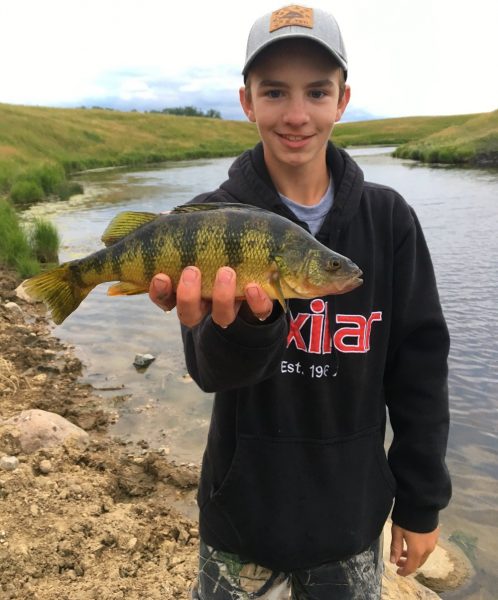Big Perch on the Prairie
Dave Maas 07.06.17

Independence Day is a time to remember all the blessings we have as Americans. So, this past July 4 holiday weekend, that’s exactly what my family and I did while visiting relatives in South Dakota.
In addition to attending church and giving thanks — especially to those members of the military, law enforcement and first responders who protect our way of life — my sons and I found time for fishing.
Believe it or not, some of those small bodies of water you see dotting the prairie in eastern SoDak contain healthy populations of fish. Depending on the land owner and his/her desires, these ponds (often called stock dams) can contain walleyes, largemouth bass, sunfish, crappies and more. One of our favorite ponds is fantastic for largemouth bass, but it’s the perch that really trip our trigger.
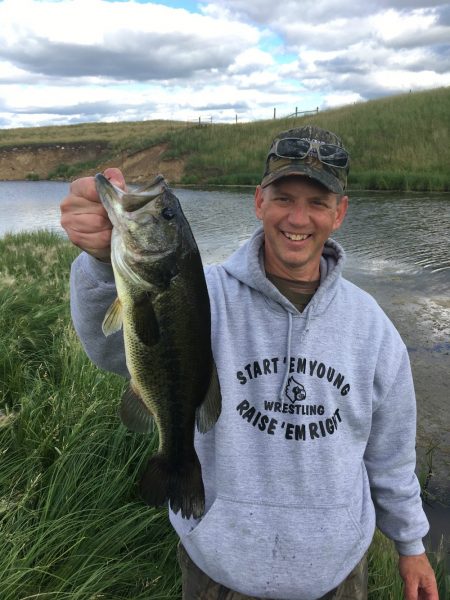
On July 3 and 4, my oldest son, Elliott, and I forced ourselves to forget about bass for a few hours and try to catch perch. In the past, we’d hook and land a perch — a big one — by accident while bass fishing with soft plastics, but we never really stopped and tried to target them. This past weekend, we used 1/32- and 1/16-ounce roundhead jigs tipped with 1.5-inch, white Berkley PowerBait Power Grubs (curly tails; photo below). To find perch, we slowly trolled in a johnboat and let out enough line to ensure our lures were near the bottom. After we hooked a perch, we stopped and casted repeated into the same area.
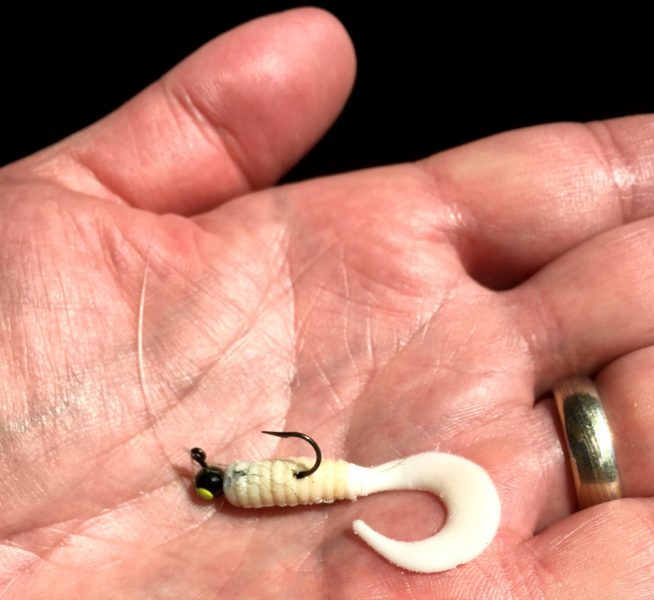
This particular 5-acre pond is spring fed, and its deepest water is nearly 20 feet. We found perch in 8-12 feet, in areas adjacent to submerged weeds. Because I’m a rookie when it comes to prairie perch, I don’t have the system figured out yet — not by a long shot — but as time goes by, I’ll get more dialed in. During my next visit, I’ll bring my Aqua-Vu Micro 5 Plus camera to see if I can figure out if there’s a particular bottom type these perch prefer (sand/gravel vs. mud, for example). Our jigs were too light to detect bottom content.
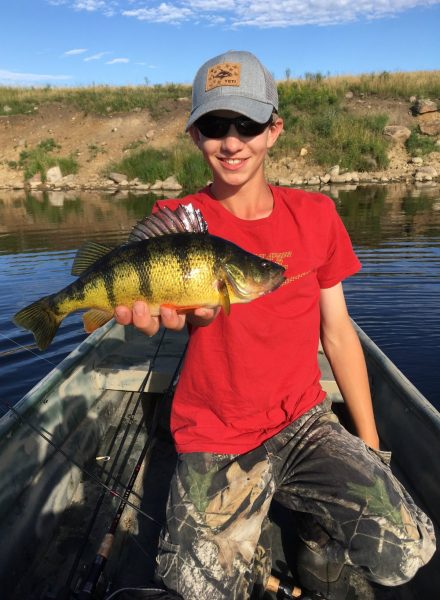
I’m not a fisheries biologist, but I’m concerned this crazy-good perch bite won’t last for long in this stock dam. You see, we never catch any small- to medium-sized perch; everything is huge. If the perch are reproducing in the pond — and I think they are — either the magnum perch or the largemouth bass are eating ALL of them. We see small- and medium-sized largemouth bass cruising the shallows and hiding in weeds, but no little perch. I’ll have to talk to the landowner; maybe it’s time for him to restock the lake with a large number of fingerling perch to try and get a better balance in size and age classes.
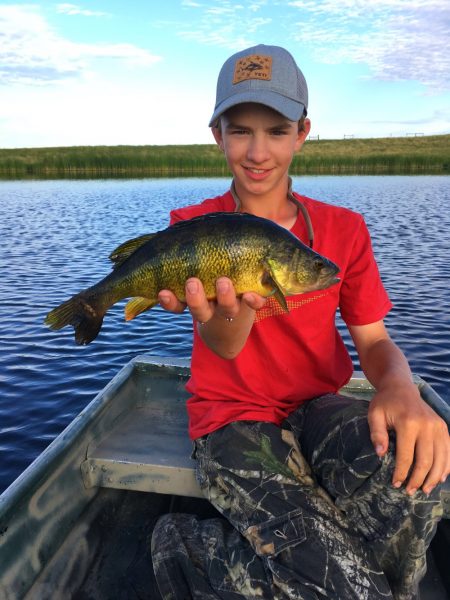
In a few hours of targeting perch spread over 2 days, Elliott and I landed two dozen of them, and each one measured 12-13.5 inches. On lightweight tackle, they put up an amazing fight. At times, you could tell simply by the way they were fighting whether you’d hooked a bass or a perch — we caught lots of bass on our Power Grubs, too — but quite often you had to wait until a fish was within 3 feet of the surface to be sure. And every time we spotted these striking gold and black beauties, we’d giggle and marvel at the size of these prairie perch.

Each fish was released back into the pond with hopes they’ll grow even larger. So far, we haven’t landed a 14-incher, but I have to think that will happen later this summer or fall. Our plan is to try crappie minnows during our next visit to the pond, and we’ll slow-troll them like you’d do when fishing a live-bait rig for walleyes. An 1/8-ounce sinker should keep a minnow near the bottom. If it works, I’ll be sure to let you know in a follow-up story on OutdoorHub.com.
Good luck fishing!
